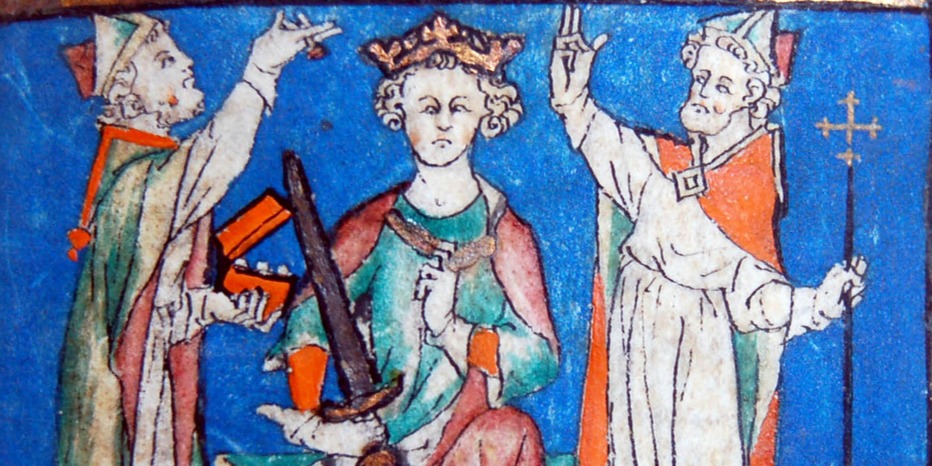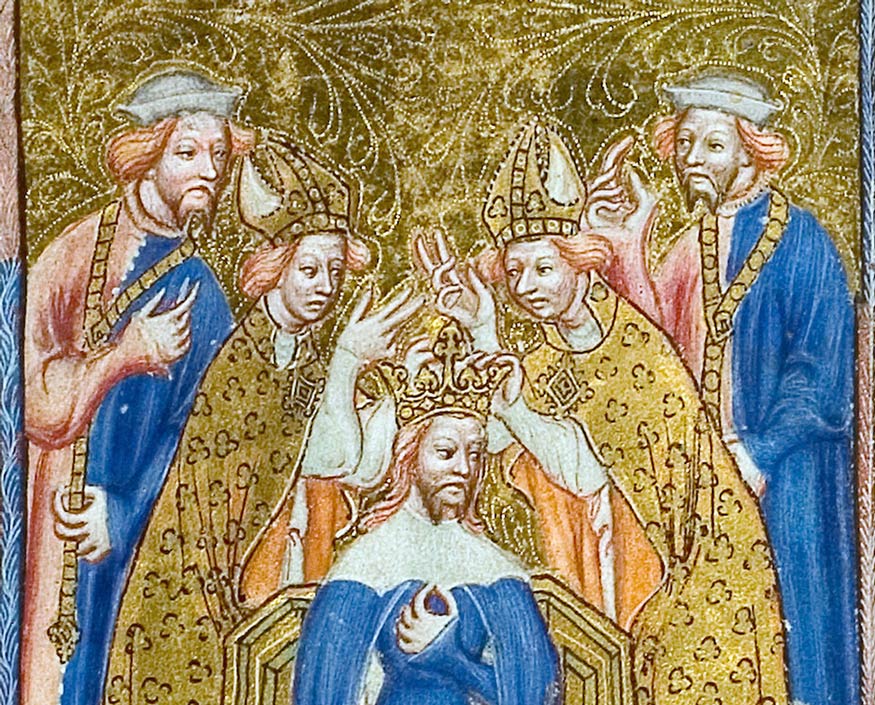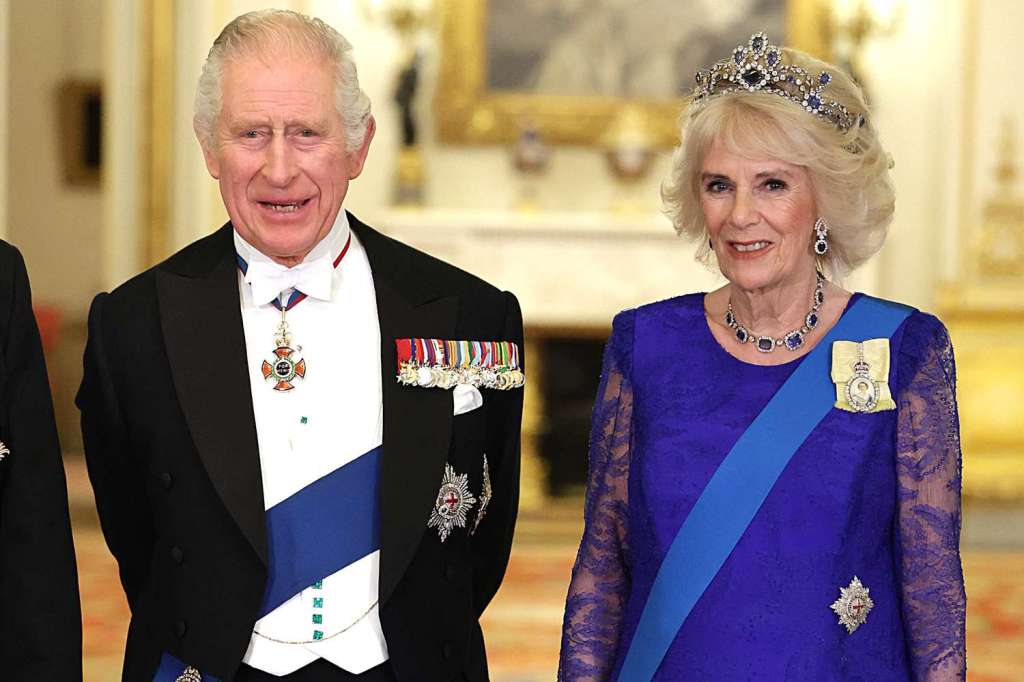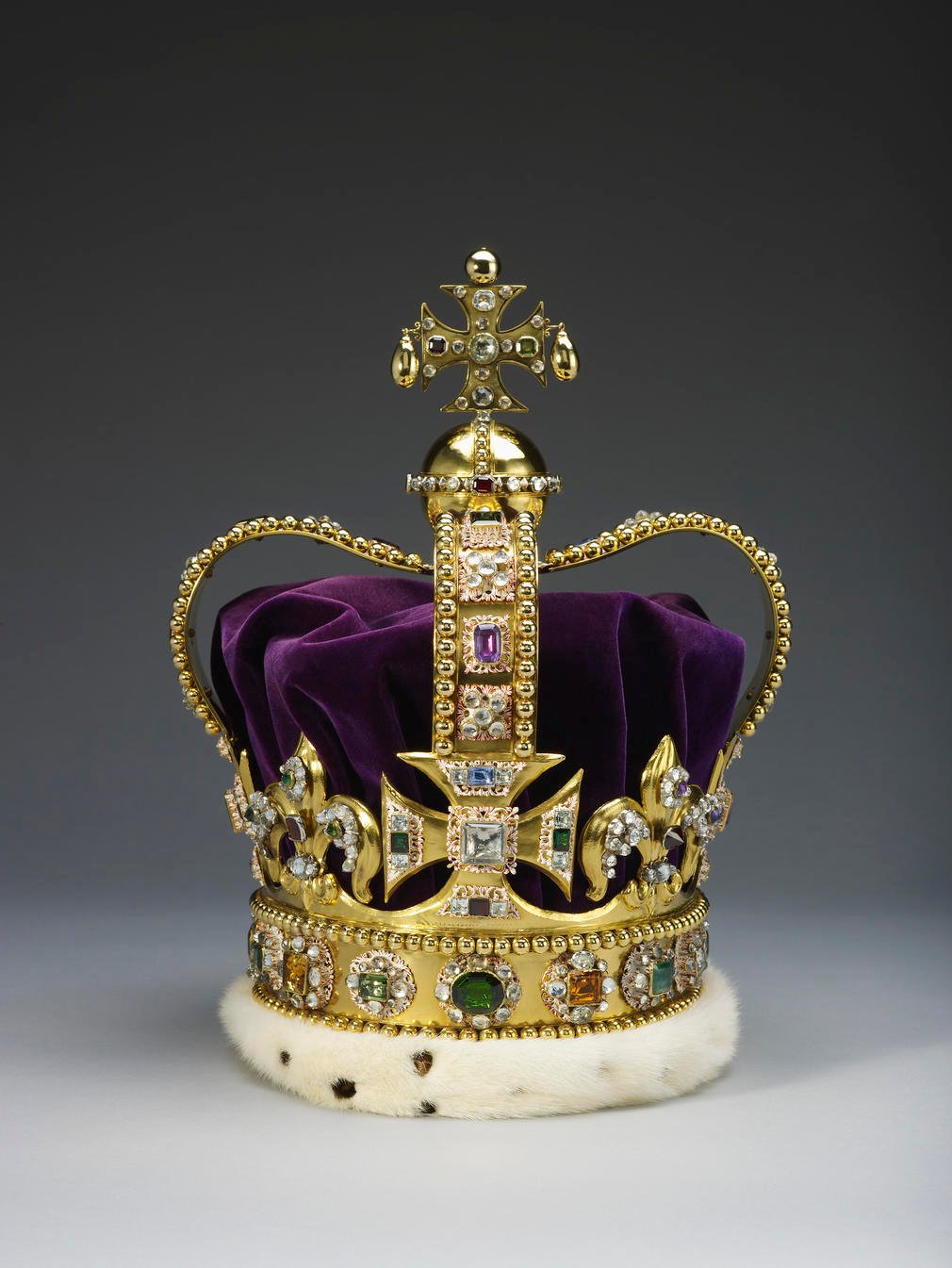
I introduced the first part of my ‘Coronation’ post with very few details about the author known as ‘Charles Tetworth’. So here are a few more: He was born at the end of the 1920s, came from a working class home in South Wales, and was brought up in Somerset and Wales. He left home young, at the age of 16, to join the RAF where he (surprisingly!) discovered the tradition of knowledge known as ‘Cabbala’, in its Tree of Life form. For the rest of his life, he dedicated himself to passing on this knowledge, and developing new forms of it which might serve in the future. In his professional life, he was versatile, working variously as an accountant, a babywear sales rep, and a jeweller among other things. He died in 2006. There is no great secret now as to who he was in ‘real’ life, but as he preferred to use this pseudonym for this particular book, I’m following his wishes.
So now the concluding section of Chapter Ten of Wielding Power by Charles Tetworth, on the subject of the British Coronation. As before, the transcription is exact but sub-headings may be mine, for ease of reading. Eithr I have supplied the illustration captions or the source for these is given.
Extract from: Wielding Power: The Essence of Ritual Practice, by Charles R. Tetworth
Enter the Monarch Elect
All the regalia have been placed in the Abbey. Now the monarch enters the Abbey, clothed in the Crimson Robe and Cap of Maintenance and proceeds to pray privately. Then the Archbishop together with the Lord Chancellor, Lord Great Chamberlain, Lord High Constable and Earl Marshall present the monarch to the four quarters – east, south, west and north – asking all to recognise the true monarch and to pay homage. With trumpets and loud acclamations of “God save the King/Queen”, the ceremony proceeds to the Litany when all the regalia (except the swords of the nobles) are placed on the altar. We then start the communion service and after the homily the monarch takes the Coronation Oath. With Bible in hand he promises to govern the people, to execute law and justice in mercy and to maintain the laws of God.
Empowerment
The monarch is disrobed of the Crimson Robe and the Cap of Maintenance. While the Archbishop is blessing the oil, the monarch sits on the Chair of Edward. This is built around the Stone of Destiny from Scone Abbey in Scotland. The Scottish kings used to be crowned on it until Edward I took it from them in 1296. Ever since, it has been used for the crowning of English monarchs. The monarch sits on the Stone of Destiny, under a canopy of cloth-of-gold which is held by four Knights of the Garter. The Archbishop then proceeds to anoint the monarch with the Holy Oil taken from the Ampulla using the Spoon. The monarch is anointed first on the crown of the head “as kings, priests and prophets were anointed”, then on the breast and the palms of both hands. The palms represent the physical, the breast symbolises the heart, and the crown of the head represents the intellect. The oil is a symbol of grace and benevolence. It impresses the gift of the Holy Spirit.

(A Note on the The Anointing Spoon, which is described thus by the Royal Collection Trust and pictured above):
The silver gilt spoon has an oval bowl, divided into two lobes, engraved with acanthus scrolls. The bowl is joined to the stem by a stylised monster’s head, behind which the stem flattens into a roundel, flanked by four pearls, and a band of interlaced scrolling, with another monster’s head; the end of the tapering stem is spirally twisted, and terminates in a flattened knop.
The spoon is first recorded in 1349 as preserved among St Edward’s Regalia in Westminster Abbey. Already at this date it is described as a spoon of ‘antique forme’. Stylistically it seems to relate to the twelfth century and is therefore a remarkable survival – the only piece of royal goldsmiths’ work to survive from that century. It was possibly supplied to Henry II or Richard I.
In times past monarchs were also anointed in the middle of the shoulders, the shoulders themselves and the inside of the elbows. This was symbolic of the wings of the spirit. Unfortunately, this is no longer done. This part of the service is the actual empowering of the monarch, and is accompanied by the words: “And as Solomon was anointed King by Zadok the priest and Nathan the prophet, so be you anointed, blessed, and consecrated King/Queen over this People, whom the Lord your God hath given you to rule and govern, In the name of the Father, and of the Son, and of the Holy Ghost.”
This recording of Zadok the Priest is sung by the Choir of Westminster Abbey
Then the canopy is taken away and the monarch is dressed in the vestments of a bishop with the Colobium Sindonis, the Dalmatic, the Pall and a girdle. Thus robed, the Golden Spurs are presented. The custom now is to touch the king’s heel with the spurs, but they used to be buckled on. A queen only touches them. The spurs signify that the monarch is head of all orders of knighthood. The Jewelled Sword of State is next given to the monarch (a king will gird the sword, while a queen touches it only) and is described as a “kingly” sword with which to “restore, maintain, reform and confirm” order. The sword is then taken by a peer and redeemed for a “hundred shillings”, and drawn out of the scabbard and carried naked in front of the monarch for the rest of the ceremony. The monarch is then invested with the Bracelets of sincerity and wisdom and the Pall or Imperial Mantle. The monarch has now been established as the nation’s priest or priestess.

Confirmation
Now begins the investiture of the monarch, dressed in the “Robe of Righteousness”, with earthly power. He or she receives the Orb with these words: “And when you see this Orb thus set under the Cross, remember that the whole world is subject to the power and empire of Christ, our Redeemer.” Next, the monarch is wedded to the spirit of the land with a ring. The Orb is laid aside, and the monarch is given the Sceptre with the Cross, the ensign of royal power and justice, to hold in his right hand, and the Sceptre with the Dove, the Rod of equity and mercy, for the left hand. Now the monarch is crowned by the Archbishop with St Edward’s Crown and everybody shouts, “God save the Queen/King.” The Peers and Kings of Arms all put on their coronets, trumpets sound and the guns in the Tower of London fire their salute.

The clergy then present the monarch with the Holy Bible, signifying wisdom, and bless him or her. The monarch leaves King Edward’s chair and goes to the Throne which is lifted up by the clergy and the peers, officers and nobles. This is a relic of the monarch being raised above the people on his shield so that all could see. All the relevant persons present pay homage to the monarch publicly. Individuals from the clergy, royals and peers come up to the monarch, swear fealty and allegiance, and kiss the monarch’s cheek. After this the monarch descends from the throne and goes to the altar where the Crown, Sceptre and Rod are delivered to the Lord Chamberlain. The monarch offers the bread and wine for communion to the Archbishop, and also makes an offering to the Abbey of an altar cloth and a gold ingot. The service continues, and when the bread and wine have been administered to the monarch, he or she puts on the Crown and takes up the Sceptre and Rod again. At the end of the service the monarch retires to be disrobed and puts on the Royal Robe of Purple Velvet, the Imperial Crown and takes the Orb in his left hand and the Sceptre with the Cross in his right hand for the long procession in the state coach back to the palace, through the waiting and cheering crowds. Once at the palace, the monarch must make a statutory appearance on the balcony to wave again to the crowds.

The Author’s Conclusions
Since the overall aim of the book is to unfold the significance of ritual, whether everyday, of magical intent or national importance, Tetworth concludes here by taking a step back and suggesting that a combination of ‘order’ and ‘joy’ are both essential for effective ritual. At the other end of the spectrum, chaos does not channel the intention successfully and unmitigated solemnity can become oppressive.
Confirmation
When people assemble in procession in large numbers the spectators are affected by colours and by feeling. If the paraders are all dressed in different colours and clothing, there is plenty of stimulation for the eyes and ears, but, like Brownian movement, there is no order in it. When there is no order, there is excitement but no satisfaction. Each new stimulus starts off a train of associations in the perceiver and is replaced by another train, but there is no connection between the two. There is nothing for the feelings or the mind to rest upon. If there is order in the procession, with uniforms and bands and cavalry and coaches, robes and coronets, there is sufficient difference for the eye not to be bored. There is a theme running through the parade. The feelings can cohere, the mind perceives order, continuity is established. Unconsciously one is reassured – there is order in the world. The coronation is a drama where the order of the state is publicly enacted. Rightly or wrongly, the spectator feels that things are all right, that someone is looking after the state.
Although Hitler and all the fascist dictators ensured that their public rituals were massive, they did not imbue the rituals with enough fun and enjoyment. They impressed strangers with the danger of the situation, not with delight; they were not the summation of centuries of different experiences. All state displays are an enactment of the structure of the society. Those states who consider all their members as being basically the same tend towards mass displays of gymnastics, weaponry and sheer weight of uniformity. For me, the spectacle of 10,000 people all performing the same actions on some great celebration is terrifying. I feel that they, the people, have been reduced to the activity of worker ants. But so be it. No doubt, that is how that particular state is happy to perceive itself.
As for the coronation, the whole procedure evokes in the mind of the British people their history and the continuity of the nation. It invokes the aid of God and Christ, and the monarch, the clergy and peers, all the guests and the crowds participate in these events. The coronation itself provides a ritual of defence. The armed forces are represented by their senior officers. It commemorates the monarch by the historic allusions and the age of some of the items involved. It initiates a reign – that is, it recognises that a new beginning has been made. It empowers, in that the symbols of monarchy are bestowed; and the handing over of the weapons acknowledges mastery. The monarch is confirmed in status when he is placed on the throne and acclaimed by the clergy, the peers and the people. Becoming a monarch means giving up a private life. It may not have been so drastic in the days before television and radio, but now it certainly is so. Even Edward VIII found that he was forced to abdicate because of his private life.
It is not easy to relate and know with certainty the result or consequences of any one action. How can we possibly judge the consequences of the great ritual act of Queen Elizabeth II’s coronation? Was it a successful ritual? History will judge the political, philosophical and social results.

And for my own conclusion…
Since these final words were written, we have of course said farewell to Queen Elizabeth. And at the time of writing this, we are awaiting the next coronation, of King Charles III on May 6th 2023. I’m grateful to historical novelist Deborah Swift, for pointing me to an article which reveals that there may be more to this choice of date than meets the eye – potentially,the date selected relates to both Islamic and Celtic traditions on this (hopefully) auspicious day. King Charles himself has been a keen student of different religious and spiritual tradiitons, and a patron of the Temenos Academy where he says:
The work of Temenos could not be more important. Its commitment to fostering a wider awareness of the great spiritual traditions we have inherited from the past is not a distraction from the concerns of every-day life. These traditions, which form the basis of mankind’s most civilised values and have been handed down to us over many centuries, are not just part of our inner religious life. They have an intensely practical relevance to the creation of real beauty in the arts, to an architecture which brings harmony and inspiration to people’s lives and to the development within the individual of a sense of balance which is, to my mind, the hallmark of a civilised person.You can read his full message by clicking on the link above. I myself was privileged to give a series of three lectures to the Temenos Academy on the significance of Russian mythology.
We don’t yet know how much the ceremony will be slimmed down, but it’s likely that most of the components of the ritual itself will be preserved. Once again, the import of his reign will emerge over time. I hope these two posts may be helpful and illuminating in understanding the prime rituals of this ‘Ancient Nation’, as Tetworth referred to it. Once again, I’m grateful to his family and editor for helping me to extract and post this chapter of his book.


















